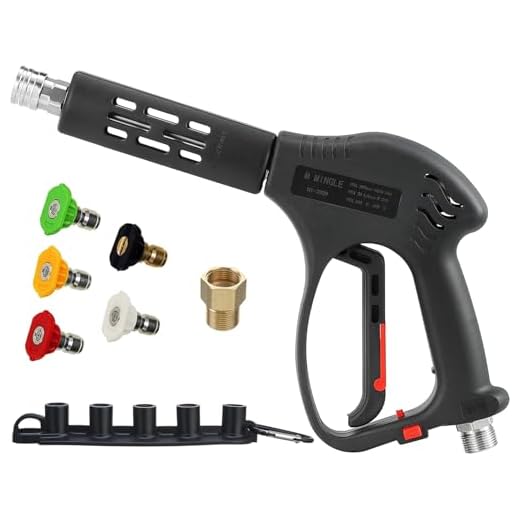


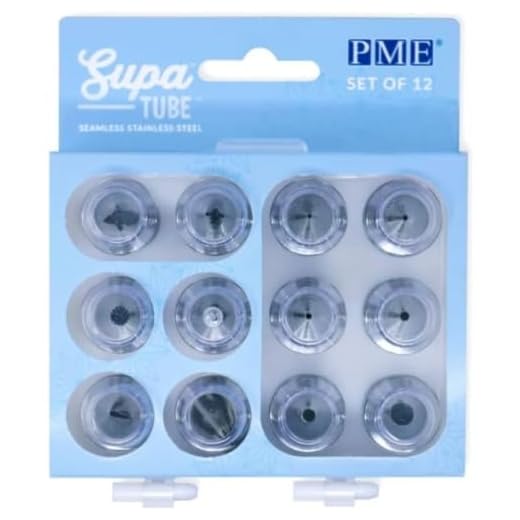
For optimal results, a 25-degree spray tip is the best choice when tackling the cleaning of your outdoor surface. This medium spray angle strikes a balance, providing sufficient power to remove dirt and grime without causing damage to the wood. The fan pattern disperses water effectively over the surface, allowing for thorough cleaning without the risk of splintering or gouging.
When working with treated wood, consider adjusting the distance while you operate. Maintain a distance of about 12 to 18 inches between the tip and the surface for the best outcome. Moving the nozzle in a consistent back-and-forth motion promotes even cleaning while preventing any concentrated pressure that could harm the wood.
For stubborn stains or mildew, a soap tip may be appropriate. This typically has a wider angle, allowing for the application of cleaning solutions before rinsing with the 25-degree tip. Always be mindful of the manufacturer’s recommendations for cleaning products to ensure compatibility and safety.
Recommended Attachments for Cleaning Wooden Surfaces
The ideal attachment for cleaning wooden surfaces is a 25-degree tip, which provides a balanced spray pattern that removes dirt without damaging the wood. This angle helps to wash away grime while preserving the integrity of the material.
Benefits of the 25-Degree Tip
This specific attachment offers several advantages:
- Prevents gouging or splintering of the wood.
- Effectively removes mildew, algae, and other contaminants.
- Ensures a smooth and even finish after cleaning.
Comparison of Common Attachments
| Angle | Usage | Recommended For |
|---|---|---|
| 0-degree | High pressure, narrow stream | Hard surfaces, tough stains (not for wood) |
| 15-degree | Very high pressure | Concrete, brick (may damage wood) |
| 25-degree | Medium pressure | Wood, composite materials |
| 40-degree | Low pressure, wide fan | Delicate surfaces, rinsing |
For best results, keep the attachment at a distance of 12 to 18 inches from the surface while working. This distance aids in preventing damage and allows for effective cleaning. Always test a small area first to assess the compatibility with the material.
Understanding Pressure Washer Nozzle Types
The choice of tip significantly impacts the cleaning outcome. I recommend a 25-degree option for most general tasks. This particular angle provides a balanced spray that’s powerful yet gentle enough for various surfaces, making it suitable for cleaning wooden structures.
The numbers on the tips are crucial, indicating the spray angle. A zero-degree tip delivers a concentrated jet, ideal for stubborn stains but risks damaging delicate materials. For wider coverage, the 40-degree option disperses water more, reducing pressure for gentler applications.
Among the various tips available, rotating or turbo tips are noteworthy. These allow for an oscillating spray, maximising cleaning efficiency without the risk of surface damage. It’s particularly useful on grungy areas or larger flat surfaces, where meticulous detailing isn’t feasible.
Always consider the surface material and existing grime level while selecting. For painted or stained wood, I suggest avoiding high-pressure tips that could strip finishes. The right choice is evident when you can achieve cleanliness without compromising the integrity of your surfaces.
Lastly, maintenance of the attachments ensures consistent function. Clean tips regularly and check for wear, as a damaged tip can alter spray pattern and effectiveness. Quality performs best when properly cared for, ensuring prolonged service and optimal results.
Choosing the Right Nozzle Size for Deck Cleaning
For optimal results, a 25-degree spray tip is my go-to selection when tackling the cleaning of wooden surfaces. This tip provides a balance between effective cleaning power and surface safety, making it ideal for removing dirt, mildew, and grime without damaging the wood.
Understanding Tip Sizes
Tip sizes are identified by the angle of the spray pattern. A 0-degree tip delivers a concentrated jet with high pressure, suitable for tough stains but risky on softer materials. A 15-degree tip increases cleaning intensity while risking wood damage. The 25-degree option, on the other hand, broadens the spray while maintaining sufficient pressure, enabling thorough cleaning without excessive force.
Optimal Distance and Technique
Maintaining a distance of approximately 12 to 18 inches from the surface is crucial, as this prevents wood damage while ensuring effective cleaning. Employing a sweeping motion while moving from left to right helps achieve an even clean, ensuring no streaks are left behind.
How to Determine the Optimal Angle for Your Nozzle
To achieve the best results, aim for a 25-degree angle when cleaning wooden surfaces. This angle effectively balances pressure and spray coverage, ensuring thorough cleaning without damaging the wood’s integrity.
Start by considering the condition of the timber. For lightly soiled areas, maintain a wider angle, such as 40 degrees, to gently remove dirt without harming the wood. In contrast, for heavily soiled sections, a narrower angle of 15 degrees may be necessary to penetrate tough grime.
Terrain and Surface Variation
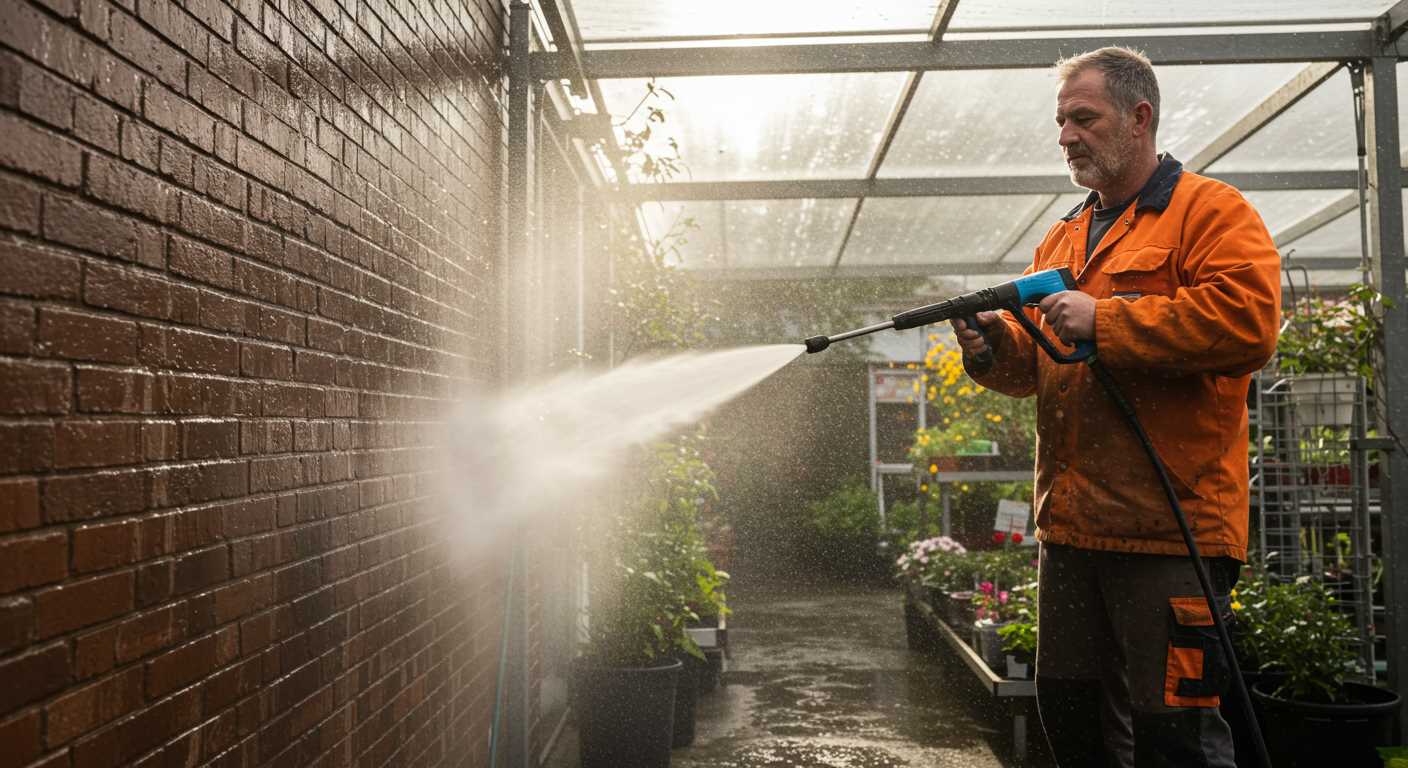
Evaluate the layout of the area. If there are depressions or grooves, adjust the angle and distance accordingly, maintaining a consistent spray pattern while avoiding concentrated direct contact that could erode the finish. When moving between different types of surfaces, always reassess the angle to adapt to varying textures and materials.
Distance and Pressure Management
Distance from the surface plays a significant role. A closer position may increase impact but also risks splintering or gouging the wood. Maintain a distance of approximately 12 to 18 inches for optimal cleaning while considering the power output of your equipment. Testing various angles and distances on inconspicuous spots will help determine the most effective approach tailored to your specific project.
By adapting your strategy based on these factors, you’ll efficiently restore the beauty of your outdoor surfaces while safeguarding them from damage. Always prioritise safety by utilising protective gear and following manufacturer guidelines.
Differences Between Fan and Turbo Nozzles for Decks
For cleaning outdoor surfaces, I recommend selecting between fan and turbo types. The fan variant produces a wide spray pattern, ideal for gently removing dirt and grime without risking damage to softer materials. It disperses the water over a larger area, making it suitable for extensive cleaning tasks.
On the other hand, the turbo type combines a rotational spray with high pressure, effectively tackling stubborn stains and built-up debris. This option creates a concentrated jet that quickly blasts away dirt, particularly effective on less fragile surfaces. However, caution is necessary to avoid etching or harming softer woods.
When deciding which to pick, consider the condition of the surface. If it’s heavily soiled or weathered, the turbo might be the better choice, but my findings suggest it’s wise to start with the fan option to evaluate the results. Always test in a less visible area to determine the suitability for your specific needs. After evaluating, switching between both can provide optimal cleaning results across different areas.
When to Incorporate Detergent with Your Cleaning Equipment
Apply detergent in scenarios where stubborn grime significantly adheres to the surface. This includes duties like removing grease, oil, and embedded dirt. The alkaline nature of many detergents helps break down these tough contaminants, making subsequent rinsing straightforward.
Timing for Detergent Application
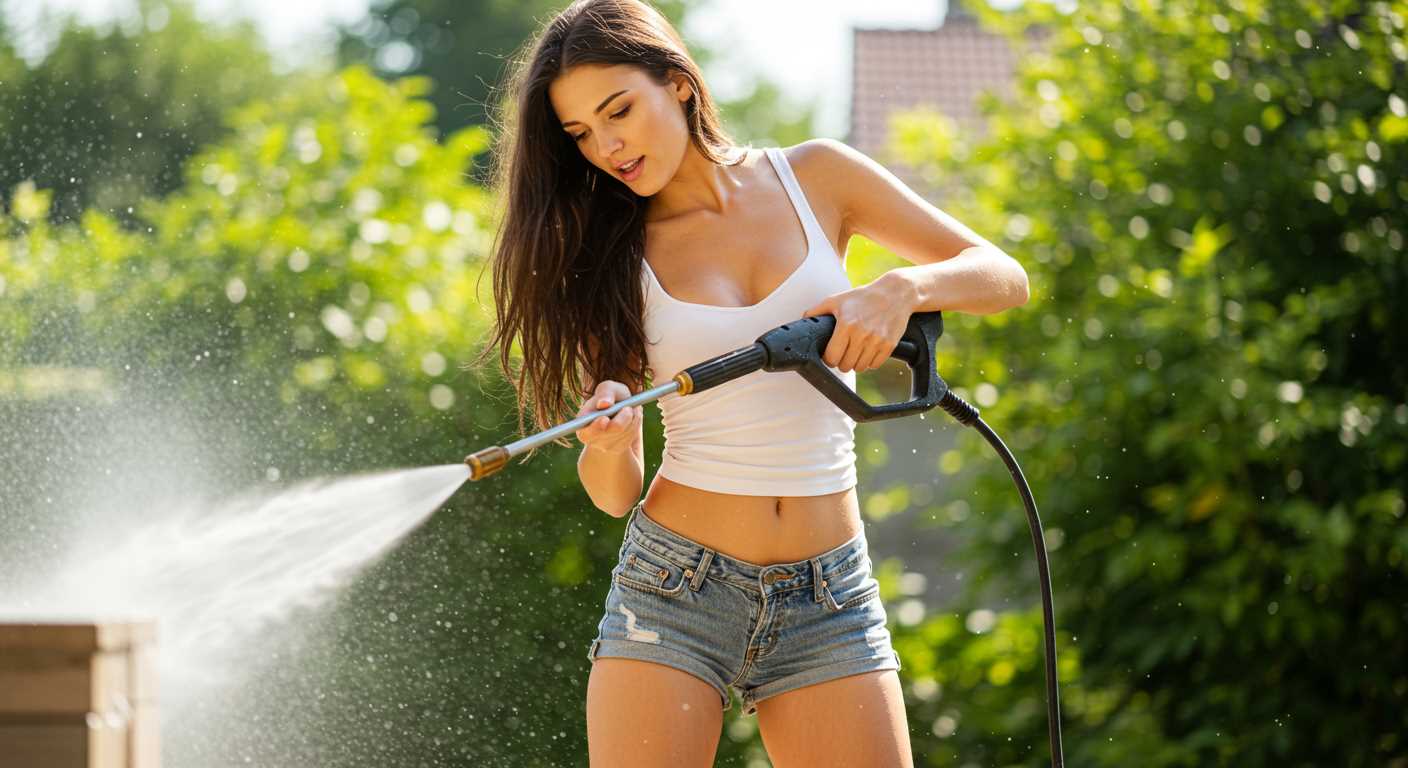
Utilise detergent at the beginning of the cleaning process. Here’s the sequence:
- Pre-treat the area with the chosen cleaning solution.
- Allow the detergent to dwell for 5-10 minutes, permitting it to penetrate the dirt. Ensure it doesn’t dry out.
- Follow up with high-pressure water, rinsing away both the cleaning agent and loosened debris.
Types of Detergent
Select based on the specific cleaning task:
- Alkaline Detergents: Effective against grease and food residues.
- Acidic Detergents: Best for mineral buildup, like limescale, especially in harder water areas.
- Biodegradable Options: Excellent for environmentally-conscious choices without sacrificing cleaning efficacy.
Always check compatibility between the detergent and the material being cleaned to prevent any potential damage. Prioritise following the manufacturer’s recommendations for optimal results.
Safety Considerations When Using Pressure Washer Nozzles
Always wear appropriate personal protective equipment (PPE) when operating equipment with high-pressure output. This includes safety goggles, gloves, and durable footwear to protect against debris and accidental splashes.
Maintain a Safe Distance
- Keep the jet at least 12 inches away from surfaces to avoid damage.
- Aim the stream downwards at an angle to reduce the risk of ricochet and injury.
Check for Hazards
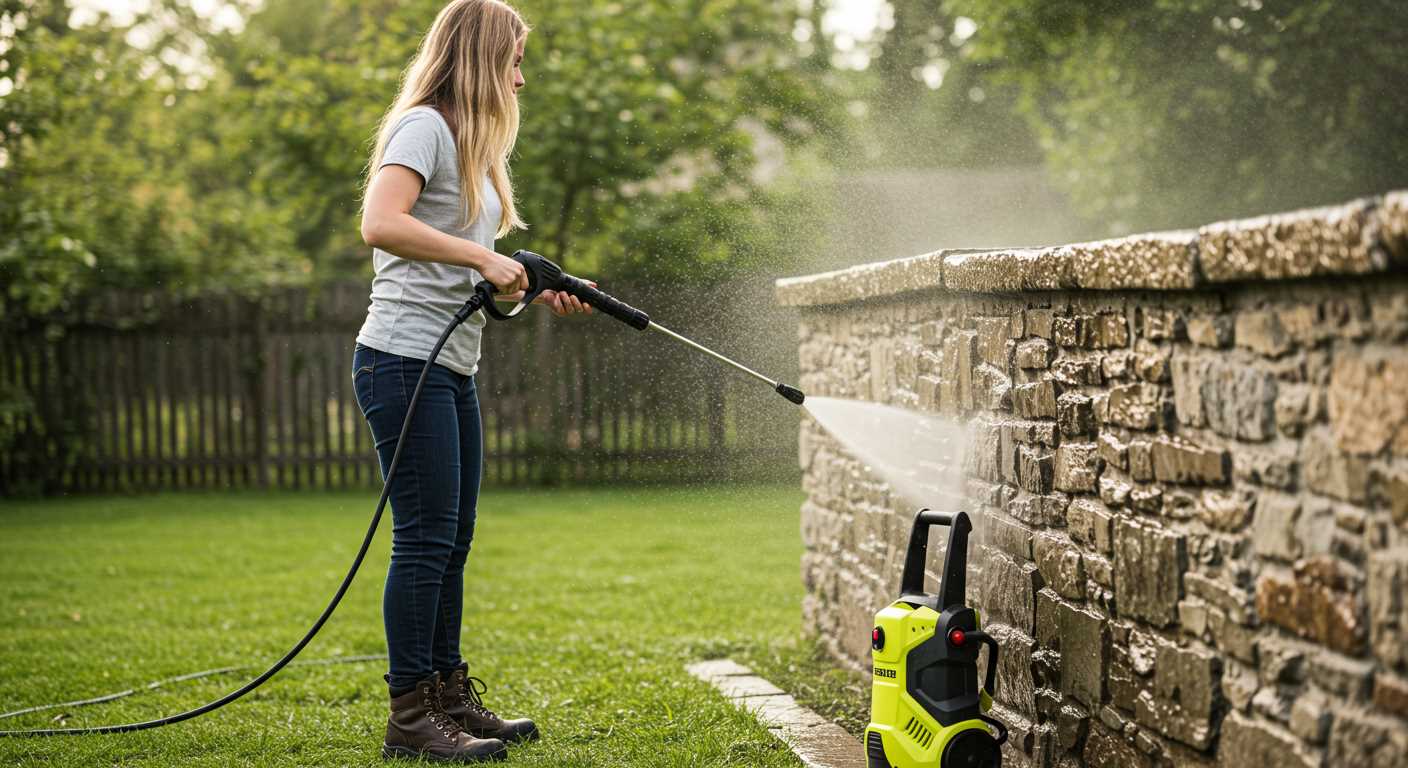
- Inspect the area for obstacles, electrical wires, or other potential dangers before starting.
- Clear the work area of any loose objects that could become projectiles.
Never direct the stream towards people, animals, or yourself. Accidental contact with the stream can cause severe injuries. Additionally, ensure that the work environment is well-ventilated, especially if detergents are involved, to avoid inhalation of harmful fumes.
Regularly check equipment for any signs of wear or damage before each use. Replace any components that are cracked or compromised to prevent malfunctions. Properly secure all attachments before operating.
Be cautious when working on elevated surfaces or ladders. Maintain a stable footing and never overreach, as a misstep can result in falls.
Lastly, ensure the outlet you’re using is in good condition, and avoid using extension cords that are damaged or rated for less than the required voltage. This will help you prevent electrical hazards while working with high-pressure gear.
Maintenance Tips for Your Pressure Cleaning Equipment Attachments
Regular inspection is essential. Check parts for debris, wear, or blockages before each use. Clean attachment tips thoroughly by rinsing them with clean water, and use a soft brush to remove stubborn grime. Ensure all connections are secure to prevent leaks, as they can affect performance and pressure levels.
Storage Recommendations
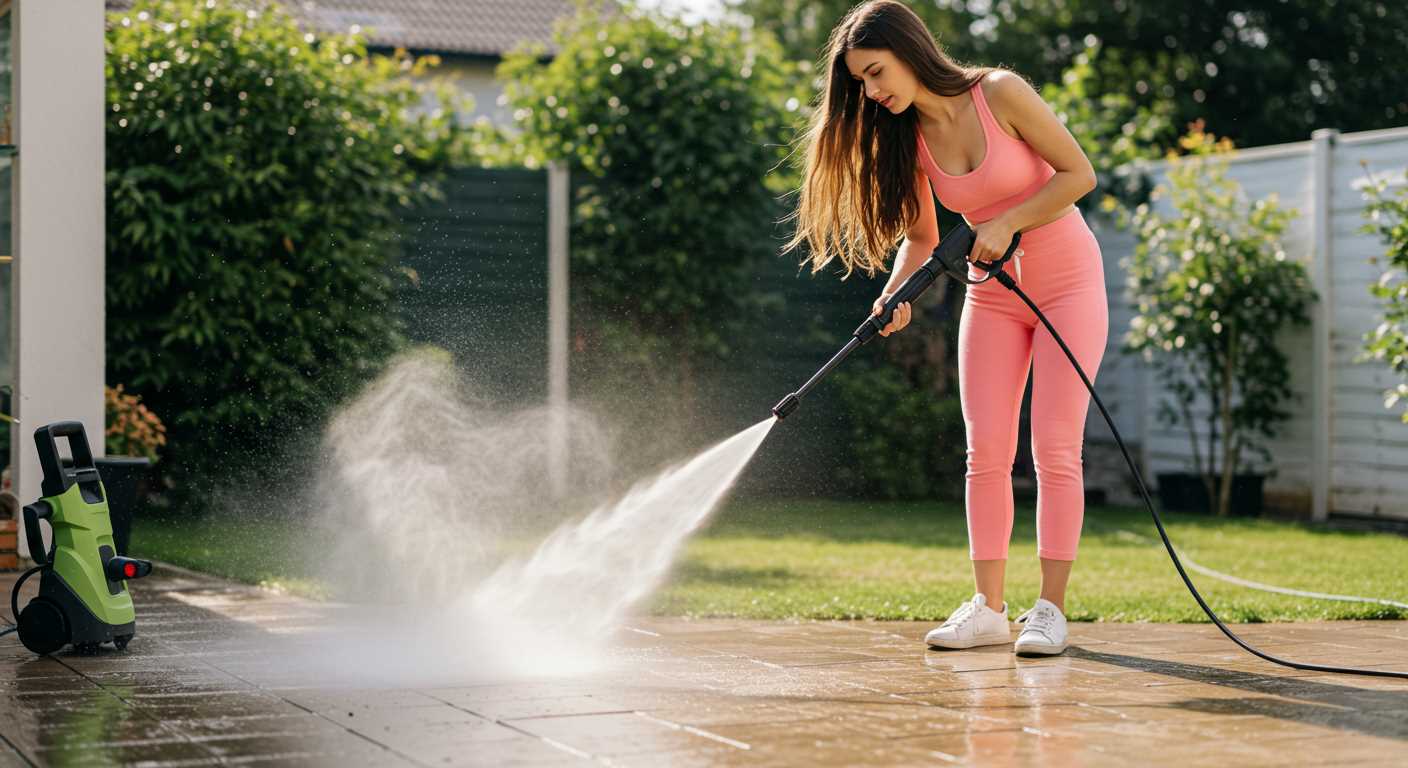
Always store cleaning attachments in a dry, protected area away from direct sunlight. A protective case can prevent damage and keep them organised. If you notice any signs of corrosion or rust, address these immediately with appropriate treatments or replacements.
Replacement Schedule
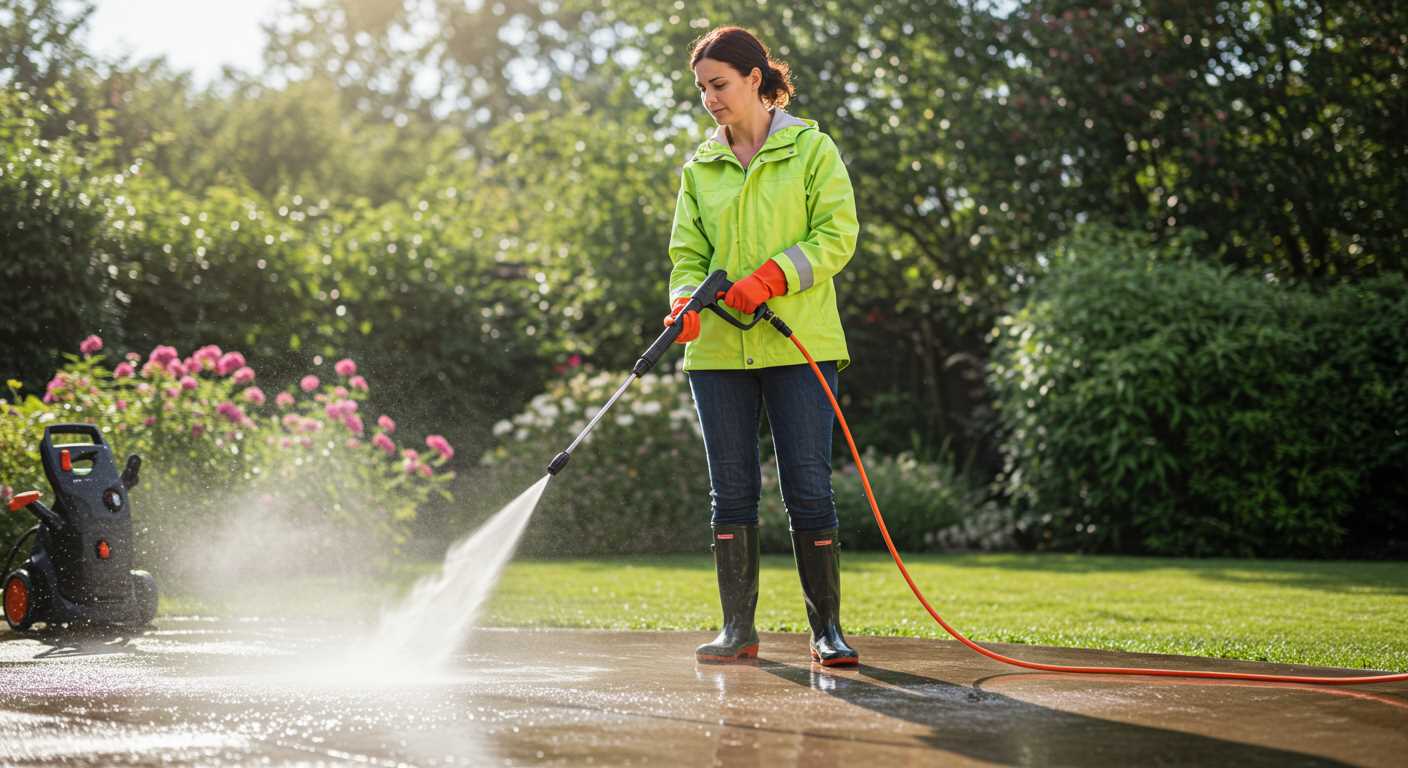
Monitor usage frequency and intensity to establish a replacement schedule. Higher usage may require replacing parts more frequently. Generally, it’s advisable to inspect them every six months, replacing any that show signs of damage or wear. Keeping a spare set can be beneficial, ensuring you’re always equipped for maintenance tasks.







